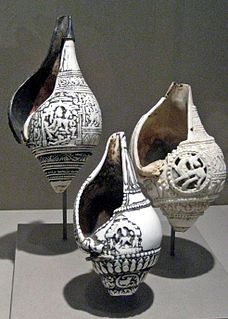 W
WCamphor is a waxy, flammable, transparent solid with a strong aroma. It is a terpenoid with the chemical formula C10H16O. It is found in the wood of the camphor laurel (Cinnamomum camphora), a large evergreen tree found in East Asia; and in the related kapur tree (Dryobalanops sp.), a tall timber tree from South East Asia. It also occurs in some other related trees in the laurel family, notably Ocotea usambarensis. Rosemary leaves (Rosmarinus officinalis) contain 0.05 to 0.5% camphor, while camphorweed (Heterotheca) contains some 5%. A major source of camphor in Asia is camphor basil (the parent of African blue basil). Camphor can also be synthetically produced from oil of turpentine.
 W
WCastor oil is a vegetable oil pressed from castor beans. It is a colourless to very pale yellow liquid with a distinct taste and odor. Its boiling point is 313 °C (595 °F) and its density is 0.961 g/cm3. It includes a mixture of triglycerides in which about 90% of fatty acids are ricinoleates. Oleate and linoleates are the other significant components.
 W
WChyavanprash is a cooked mixture of sugar, honey, ghee, Indian gooseberry (amla) jam, sesame oil, berries and various herbs and spices. It is prepared as per the instructions suggested in Ayurvedic texts. Chyavanprash is widely sold and consumed in India as a dietary supplement.
 W
WIn the field of drug discovery, classical pharmacology, also known as forward pharmacology, or phenotypic drug discovery (PDD), relies on phenotypic screening of chemical libraries of synthetic small molecules, natural products or extracts to identify substances that have a desirable therapeutic effect. Using the techniques of medicinal chemistry, the potency, selectivity, and other properties of these screening hits are optimized to produce candidate drugs.
 W
WDeer musk is a substance with a persistent odor, obtained from the caudal glands of the male musk deer.
 W
WGambier or gambir is an extract derived from the leaves of Uncaria gambir, a climbing shrub native to tropical Southeast Asia. Gambier is produced in Indonesia and Malaysia where it was an important trade item into the late nineteenth century. It can be used as a tanning agent, a brown dye, a food additive and as herbal medicine. Also known as pale catechu, white catechu or Japan Earth, it is often confused with other forms of catechu.
 W
WKala namak is a kiln-fired rock salt used in South Asia with a sulphurous, pungent smell. It is also known as "Himalayan black salt", Sulemani namak, bire noon, bit loona, bit lobon, kala loon, guma loon, or pada loon, and is manufactured from the salts mined in the regions surrounding the Himalayas.
 W
WOushadhi or Pharmaceutical Corporation Kerala Ltd is an Ayurvedic medicine manufacturing company situated in Kuttanellur, in Thrissur City of Kerala state. It is a 100% Government of Kerala owned company and produces around 450 ayurvedic formulations.
 W
WA Shankha has religious ritual importance in Hinduism. It is the shell of any suitable sea snail which had a hole made for the performer's embouchure.
 W
WShilajit or Mumijo is a blackish-brown powder or an exudate from high mountain rocks, often found in the Himalayas, Karakoram, Nepal, Bhutan, Girda, Russia, Iran, Mongolia and in the south of Peru, where it is called Andean Shilajit.
 W
WTriphala is an Ayurvedic herbal rasayana formula consisting of equal parts of three myrobalans, taken without seed: Amalaki, Bibhitaki, and Haritaki. It contains vitamin C.